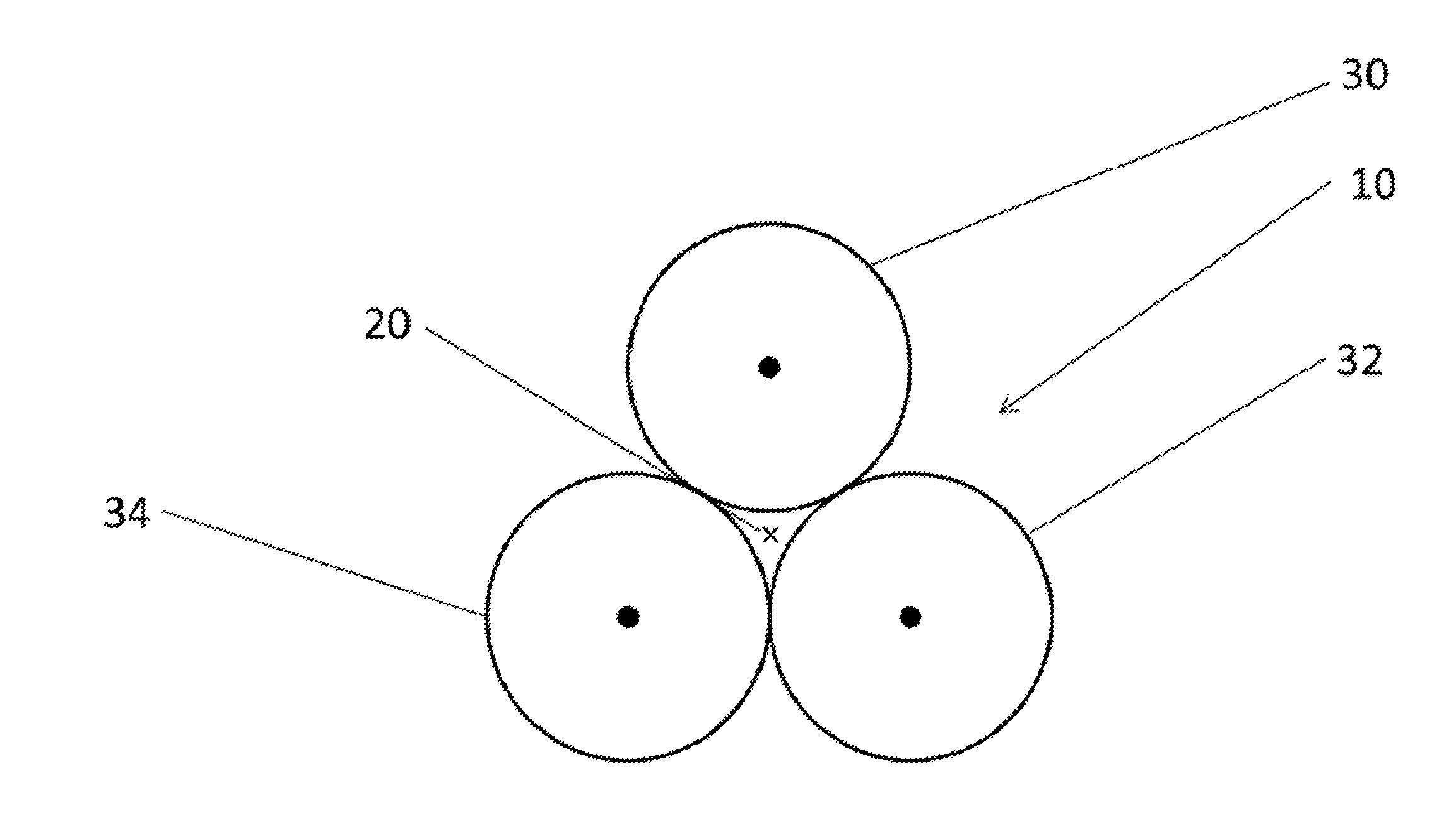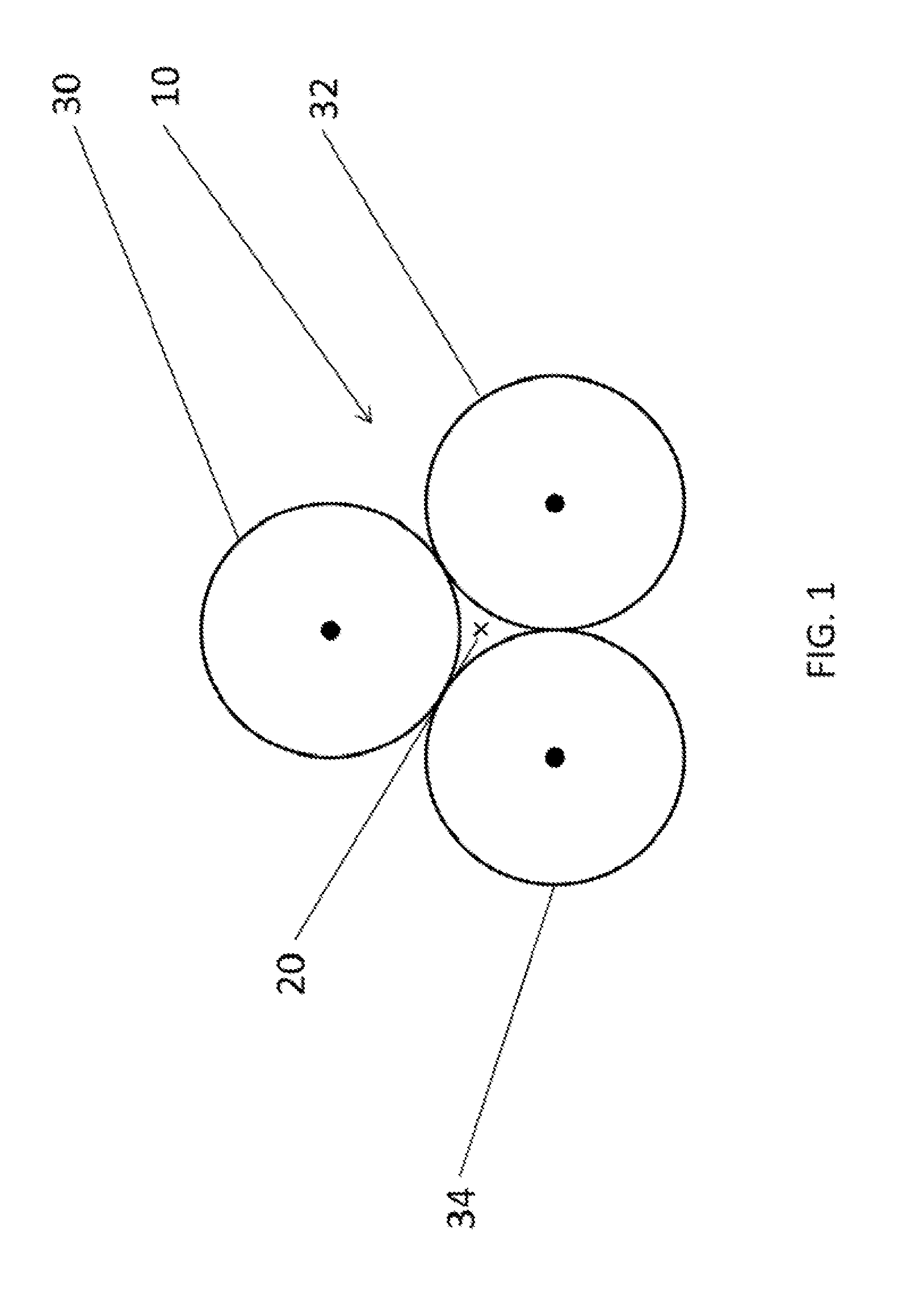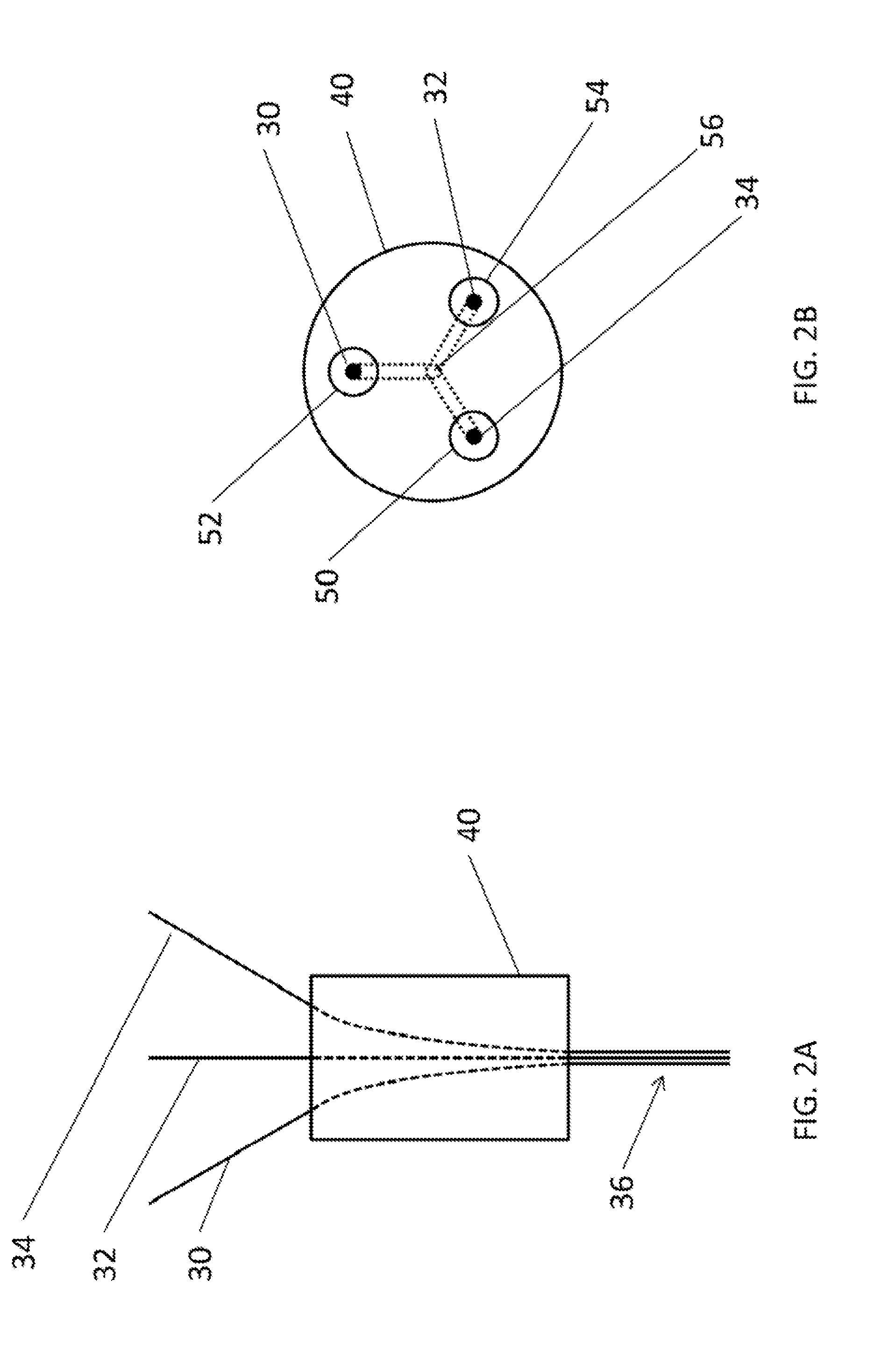Method for manufacturing multi-fiber bundles
a multi-fiber bundle and fiber bundle technology, applied in the direction of manufacturing tools, soldering devices, instruments, etc., can solve the problem of inability to connect, and achieve the effect of improving the amount of available optical fiber, excellent single-mode fiber, and reducing cos
- Summary
- Abstract
- Description
- Claims
- Application Information
AI Technical Summary
Benefits of technology
Problems solved by technology
Method used
Image
Examples
Embodiment Construction
[0037]An embodiment of the invention includes a method of manufacturing a multi-fiber bundle 10, for example, as described by way of illustration in FIGS. 1 and 2A and 2B. The level of zero-bending stress is herein defined at the neutral axis. The multi-fiber bundle 10 includes a multi-fiber bundle neutral axis 20, as shown in FIG. 1. The level of zero-bending stress of the multi-fiber bundle 10 then is herein defined at the multi-fiber neutral axis. The multi-fiber bundle 10 includes at least three standard optical fibers 30, 32, 34. One of ordinary skill in the art will appreciate that although three optical fibers are shown in the figures, more optical fibers may be used in a multi-fiber bundle according to the instant invention depending on the application. The at least three optical fibers 30, 32, 34 includes respective optical fiber neutral axes. The levels of zero-bending stresses of the optical fibers are herein defined at their respective optical fiber neutral axes. The at ...
PUM
| Property | Measurement | Unit |
|---|---|---|
| constant distance | aaaaa | aaaaa |
| refractive index | aaaaa | aaaaa |
| bending amplitude | aaaaa | aaaaa |
Abstract
Description
Claims
Application Information
 Login to View More
Login to View More - R&D
- Intellectual Property
- Life Sciences
- Materials
- Tech Scout
- Unparalleled Data Quality
- Higher Quality Content
- 60% Fewer Hallucinations
Browse by: Latest US Patents, China's latest patents, Technical Efficacy Thesaurus, Application Domain, Technology Topic, Popular Technical Reports.
© 2025 PatSnap. All rights reserved.Legal|Privacy policy|Modern Slavery Act Transparency Statement|Sitemap|About US| Contact US: help@patsnap.com



